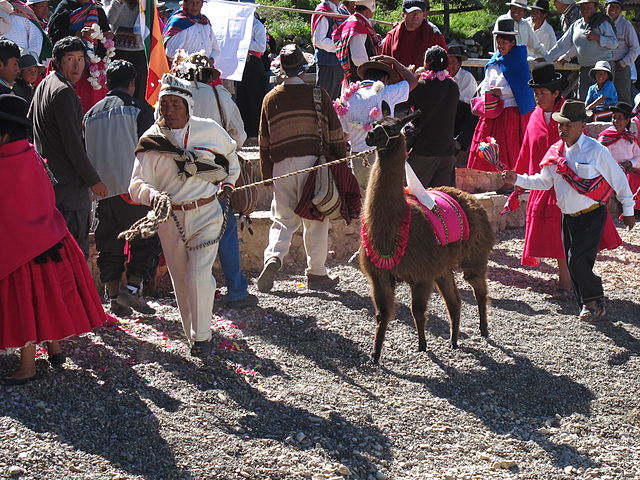Túpac Katari or Catari, born Julián Apasa Nina, was the indigenous Aymara leader of a major insurrection in colonial-era Upper Peru, laying siege to La Paz for six months. His wife Bartolina Sisa and his sister Gregoria Apaza participated in the rebellion by his side. The rebellion was ultimately put down by Spanish loyalists and Katari was executed by quartering.
Katari depicted in anonymous watercolor from c. 1784–1806 in the Viceroyalty of the Río de la Plata.
Plan of the city of La Paz in 1781.
Monument of Túpac Katari, in the town of Peñas
The Aymara or Aimara, people are an indigenous people in the Andes and Altiplano regions of South America. About 2.3 million live in northwest Argentina, Bolivia, Chile, and Peru. Their ancestors lived in the region for many centuries before becoming a subject people of the Inca Empire in the late 15th or early 16th century, and later during the Spanish conquest of Peru in the 16th century. With the Spanish American wars of independence (1810–1825), the Aymaras became subjects of the new nations of Bolivia and Peru. After the War of the Pacific (1879–1883), Chile annexed territory with the Aymara population.
Aymara people in Jujuy Province, c. 1870.
Aymara poncho, 17th or 18th century
Puerta del Sol, Tiwanaku, Bolivia
Traditional Aymara ceremony in Copacabana, on the border of Lake Titicaca in Bolivia







